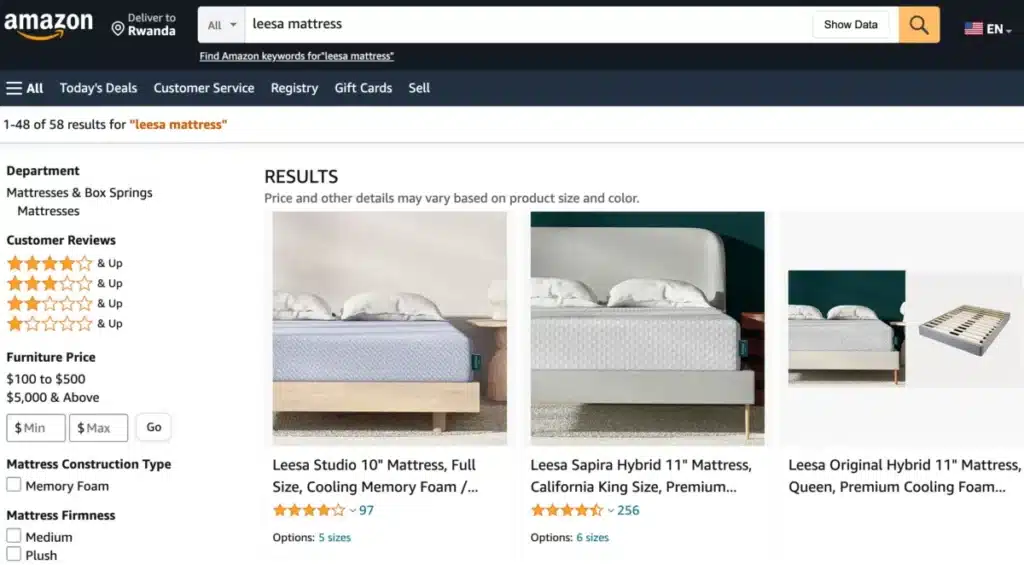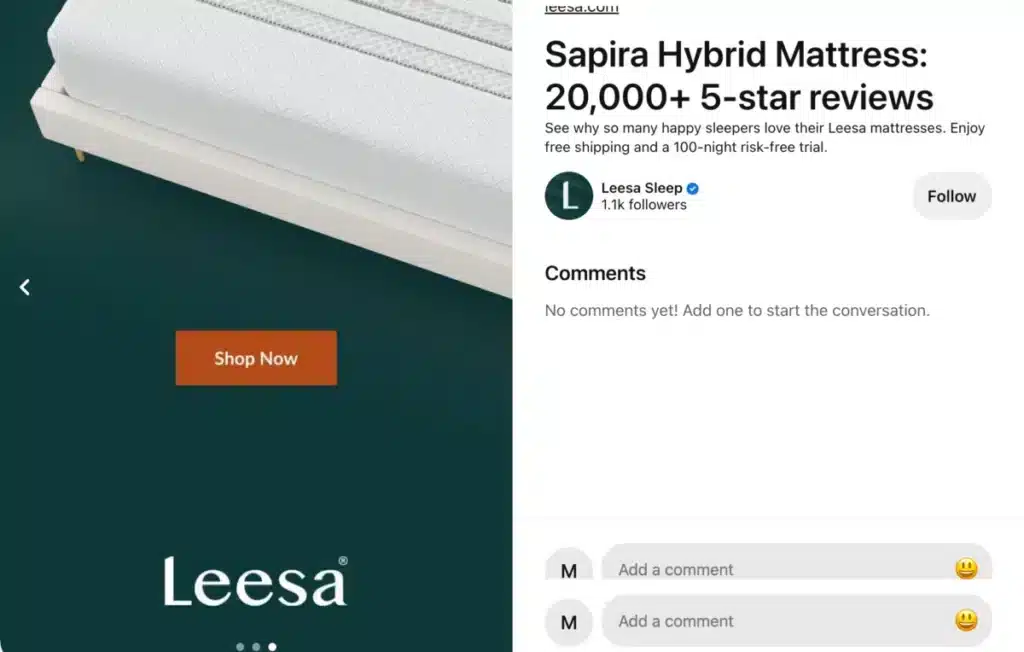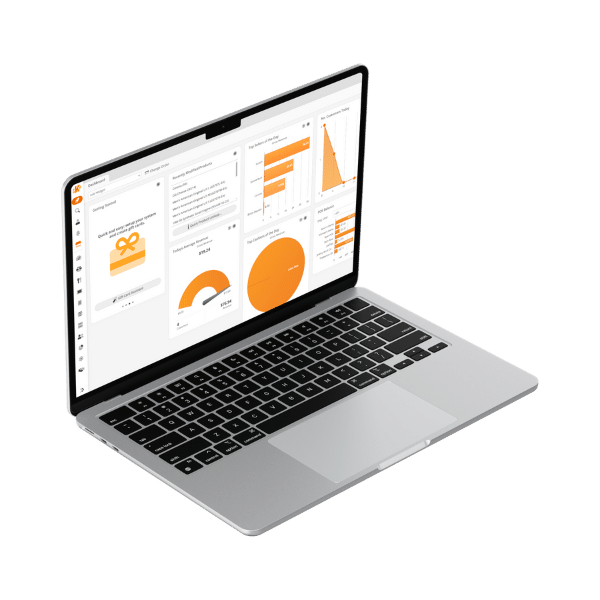To grow your retail business in today’s landscape, you must go beyond your website or physical store. It’s important to explore new channels such as marketplaces, social media, price comparison engines, etc. As soon as you leverage multiple channels to promote your products, you conduct multi-channel retailing. This retail strategy comes with plenty of advantages, but it also has its challenges.
The question every retailer will have to ask is how to implement a multi-channel retailing strategy effectively. Check out this guide to get more info and ideas on operating a multi-channel retail operation. We’ll also discuss the different types of multi-channel in retail and examples of brands successfully implementing a multi-channel strategy.
What is Multi-Channel Retail?
Multi-channel retailing refers to implementing multiple sales channels, such as brick-and-mortar stores, online marketplaces, mobile apps, and catalogs, to create a seamless customer shopping experience. The idea behind multi-channel retail is to offer customers different options for discovering and purchasing products while creating a consistent brand image and customer experience across all channels.
Apple is an excellent example of a brand that executes multi-channel retail very well. Apple has a strong brick-and-mortar presence with its retail store chain but also an extensive online marketplace and mobile and tablet applications for digital shopping. The company has created a seamless shopping experience for customers, with a consistent look and feel across all channels.
Customers can start the purchase process online but pick up the product in-store, or they can buy a product in-store and have it delivered to their homes. Apple has created a truly omnichannel, unified commerce experience, making it easy and convenient for customers to shop with them, regardless of their preferences.
What Are The Types of Multi-Channel Retailing
Today, consumers have become multi-channel shoppers, and retailers need to understand each type of channel to determine its value, as certain channels work best for different stages of the shopper journey. Shoppers can now browse products in a catalog and shop in-store – or vice versa.
Below are the most popular channels you should be implementing as a retailer to generate more sales:
- Brick-and-mortar retail refers to physical storefronts where customers can browse and purchase products in person. This type of retail offers benefits such as allowing customers to see and touch products, try on clothes, and receive immediate assistance from sales associates. However, brick-and-mortar retail also has some drawbacks, such as being limited to a specific geographic location and store-specific hours.
- Social media channels, such as Instagram, Facebook, and Pinterest, are increasingly popular among retailers as a way to reach customers. Retailers can use social media to showcase their products, engage with customers, and drive traffic to their online stores. Social media also offers a unique opportunity to build relationships with customers and gather feedback, which can be valuable in refining product offerings and improving the overall customer experience.
- Online marketplaces, such as Amazon, and alternatives, such as eBay, and Walmart, are websites that allow retailers to list and sell their products to a large, diverse customer base. These marketplaces provide access to a large audience and can help retailers reach new customers who might have yet to find their products. However, retailers must also compete with many other sellers on the marketplace and may have limited control over the customer experience.
- Direct-to-consumer (DTC) retail refers to selling products directly to customers, bypassing intermediaries such as brick-and-mortar stores or online marketplaces. DTC companies can offer a more personalized and direct relationship with customers and can control the customer experience from end-to-end. However, DTC retail also requires significant marketing and customer acquisition investment and may have limited reach compared to other channels.
- Mobile-friendly websites and apps are another important area to consider. According to Statista, by 2025, 10.4% of all retail sales will be through mobile commerce. This is the area with the largest growth in retail sales, ahead of other sales channels like in-store shopping and traditional eCommerce. Consumers are also checking their mobile devices while in-store. According to RetailMeNot, 69% of shoppers use their mobile devices to search for customer reviews. Another 58% search for comparable products, and 55% use their mobile Internet connection to view product features.

How Can Retail Businesses Benefit From Multi-channel In Retail?
Multi-channel retail is a strategy that involves leveraging multiple channels or touchpoints to interact with customers and sell products. This approach offers several benefits to retailers:
Wider audience reach
Multi-channel retail allows retailers to reach a wider audience by leveraging different channels. This broadens the retailer’s customer base and helps to increase brand exposure.
Improved customer experiences
By providing customers with a seamless and consistent experience across all channels, retailers can create a more positive and memorable experience for their customers. Customers can shop using their preferred channel and expect the same quality of service and product information regardless of where they interact with the retailer.
Sales growth
Retailers who adopt a multi-channel approach are more likely to see sales growth as a result of reaching a larger audience and improving the customer experience. In addition, multi-channel retail enables retailers to collect data on customer preferences, behaviors, and purchases, which can be used to inform and improve future marketing and sales efforts.
Reduced operational costs
By centralizing operations and standardizing processes across all channels, retailers can streamline their operations, reduce duplicated efforts, and lower overall costs. Additionally, multi-channel retail allows retailers to be more efficient in their inventory management, as they have a clearer picture of what products are selling across all channels, which can help to reduce waste and overstocking.
Customer flexibility
Another benefit of multi-channel retail is increased customer flexibility. Customers can shop through various channels, making it convenient and easy to purchase products anytime and anywhere. This allows customers to choose the shopping experience that best suits their needs, whether they prefer the convenience of online shopping or the more personal experience of in-store shopping. In addition, multi-channel retail also allows for seamless transitions between channels, so customers can start their shopping journey on one channel and finish it on another.
What Are The Challenges of Multi-Channel Retailing?
Implementing a multi-channel strategy in retail can bring numerous benefits, but it also comes with its own set of challenges. One of the main challenges is logistics. Retailers must ensure that their inventory and distribution systems are robust enough to handle orders from multiple channels and fulfill them promptly and efficiently. This requires coordination and communication between various departments, such as marketing, sales, and supply chain management, to ensure that the customer experience is seamless and consistent across all channels. Every product sold must be inventoried at stores, warehouses, or third-party retailers. Retailers must also manage product information across all sales channels to ensure consistency and accuracy.
Another challenge of implementing multi-channel retail is the cost. Setting up a multi-channel system can be expensive, as retailers must invest in technology, infrastructure, and resources to support their new sales channels. Retailers must carefully weigh the costs against the potential benefits and find ways to minimize their investment while still delivering a high-quality customer experience.
Inventory management is also a key challenge for retailers when implementing multi-channel. Retailers must have real-time visibility into their inventory levels and stock availability across all channels to ensure that they can fulfill orders promptly and accurately. They must also be able to accurately track and manage inventory levels, returns, and transfers between channels, to prevent overstocking or stock shortages.
What Is The Difference Between Multi-Channel and Omni-Channel Retailing
Multi-channel and omni-channel retailing refer to two different approaches to selling products and engaging with customers in the retail industry. Multi-channel retailing refers to a strategy where a company offers its products and services through multiple channels, such as a physical store, a website, and a mobile app. Each channel operates independently and may have a different customer experience, inventory, and pricing. This approach gives customers more options to interact with the brand and purchase products, but it can also create inconsistencies and gaps in the customer experience.
On the other hand, omni-channel retailing refers to a cohesive and integrated approach to retail where all channels work together to provide customers with a seamless shopping experience, no matter how or where they choose to interact with the brand. In an omni-channel strategy, the company unifies its customer data, inventory, and other systems to create a single view of the customer and offer a consistent experience across all channels. This allows customers to start a shopping journey on one channel and continue it on another without losing any information or progress. Omni-channel retailing aims to provide customers with a convenient and personalized shopping experience, increase customer loyalty, and drive sales growth.
Multi-Channel Retail in Practice: Leesa
Leesa, an online mattress seller, sells its products through its own online store and social media. Each channel in its multi-channel strategy is a distinct buying opportunity. The company leverages its product sales through its online store, marketplaces, and social media.
Channel 1: eCommerce site
Leesa’s eCommerce site is the virtual home of its products. New visitors without an existing account are presented with an offer of “$700 off” after purchasing select mattresses.

Channel 2: Online marketplaces
Leesa also sells its products on Amazon.

Channel 3: Social media
Leesa also uses social retail. It’s products are listed and sold on Pinterest via a buyable pin.

POS System And Multi-Channel Retailing
Using a retail point of sale (POS) system can greatly enhance the multi-channel retail experience for both customers and retailers. It provides a centralized platform for managing inventory, sales, and customer information across all channels, whether in-store, online or through a mobile app. This makes it easier for retailers to track customer purchase history and preferences, enabling them to offer personalized recommendations and promotions.
Furthermore, a POS system can be integrated with various payment options, including cards, mobile wallets, and online payment methods, making it convenient for customers to purchase through their preferred channels. With the ability to seamlessly transfer sales and customer data between channels, retailers can also better manage their overall operations and make informed business decisions.
Overall, a POS system can help multi-channel retailers improve their customer experience, increase sales, and streamline their operations. If your current retail POS system doesn’t cut it, and you’re thinking of switching POS providers, KORONA POS is a solution to consider. KORONA POS is a great solution for multi-channel retailers as it offers a comprehensive and seamless integration of all sales channels.
With KORONA POS, retailers can manage their brick-and-mortar stores, online stores, marketplaces, and pop-up shops all in one platform. This gives retailers a unified view of their inventory and customer data, making it easier to fulfill orders, track sales and revenue, and provide a consistent customer experience across all channels. The intuitive interface and customizable features also allow retailers to streamline their operations and make real-time decisions based on data-driven insights, ultimately improving the efficiency and profitability of their business.

Speak with a product specialist and learn what KORONA POS can do for your business.
FAQs: Multi-Channel Retailing FAQs
Multi-channel retail is important because it allows businesses to reach more customers and provide a better shopping experience. By having multiple channels available, businesses can meet customers where they are and provide them with the information and support they need to make informed purchasing decisions. In addition, multi-channel retail can also help businesses to increase sales and customer loyalty.
To effectively implement a multichannel retail strategy, businesses need to start by understanding their customers and their shopping preferences. This information can then be used to determine which channels are most important and how they can be used to best meet customer needs. It is also important for businesses to invest in the technology and processes needed to support a multi-channel approach and train employees to effectively manage and execute the strategy. Communication and collaboration between departments and across channels are also key to ensuring a seamless shopping experience for customers.
Multi-channel retail challenges include managing inventory across multiple channels, ensuring consistent pricing and promotions, providing a consistent brand experience, and integrating different systems and processes. Additionally, multi-channel retail requires significant investments in technology, staffing, and training to be successful.
Multichannel Retail: Wrapping Up
In conclusion, multi-channel retailing offers a range of options for companies looking to reach customers and sell products. By combining channels, such as utilizing social media to drive traffic to an online store, retailers can create a comprehensive retail experience that maximizes the benefits of each channel.
While multi-channel retail can bring many benefits, it also presents several challenges for retailers. Logistics, costs, and inventory management are just a few challenges that retailers must consider and overcome to implement a multi-channel strategy successfully. Retailers must find ways to address these challenges and ensure that their systems are robust, efficient, and cost-effective while also providing a seamless and consistent customer experience across all channels.
KORONA POS integrates with OctopusBridge to unify retail data management between channels. To lean more, click the link below!












